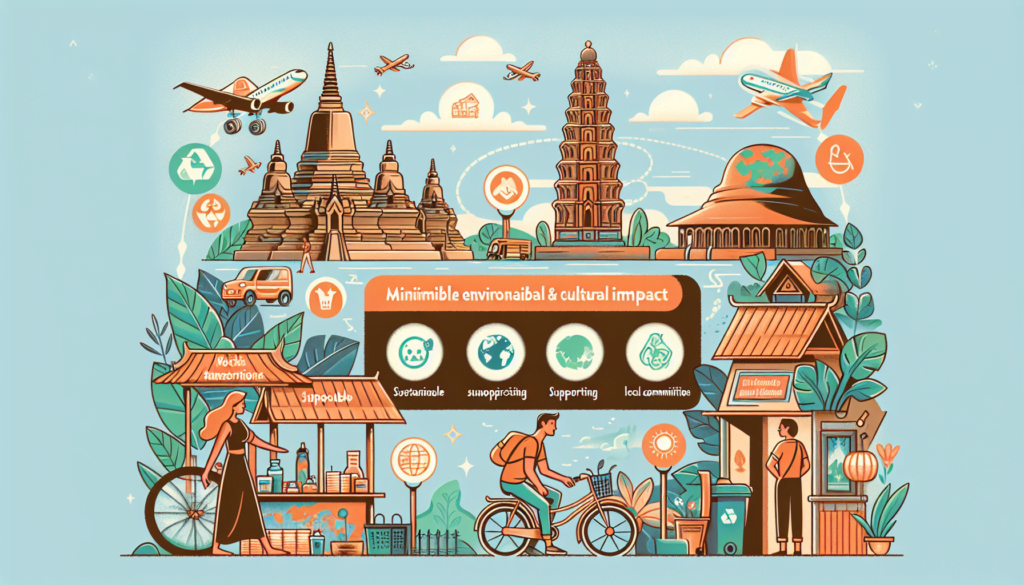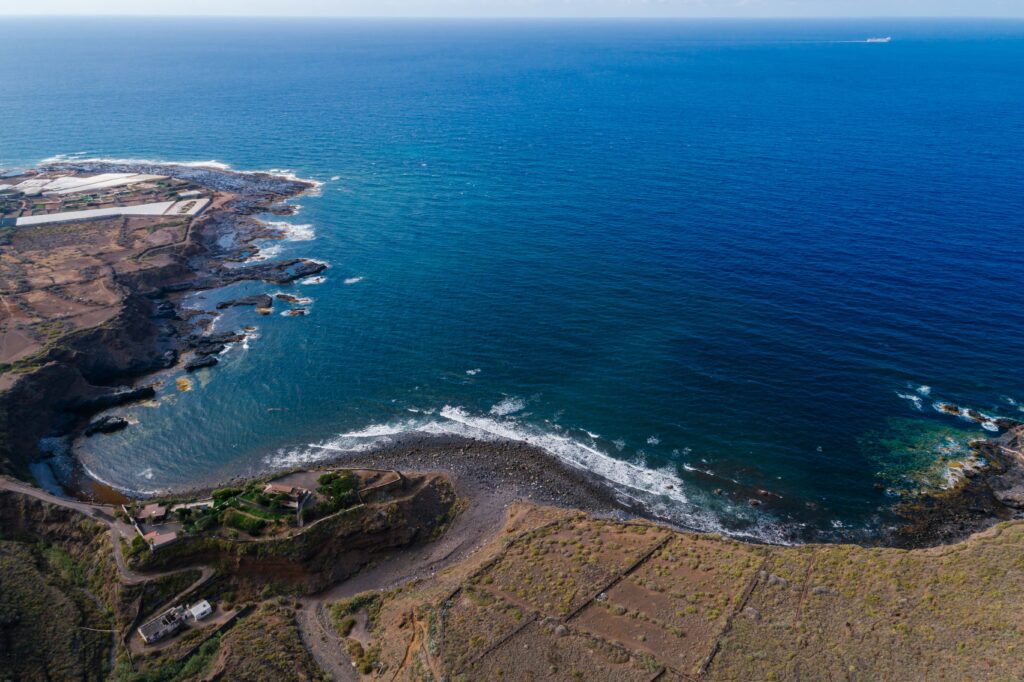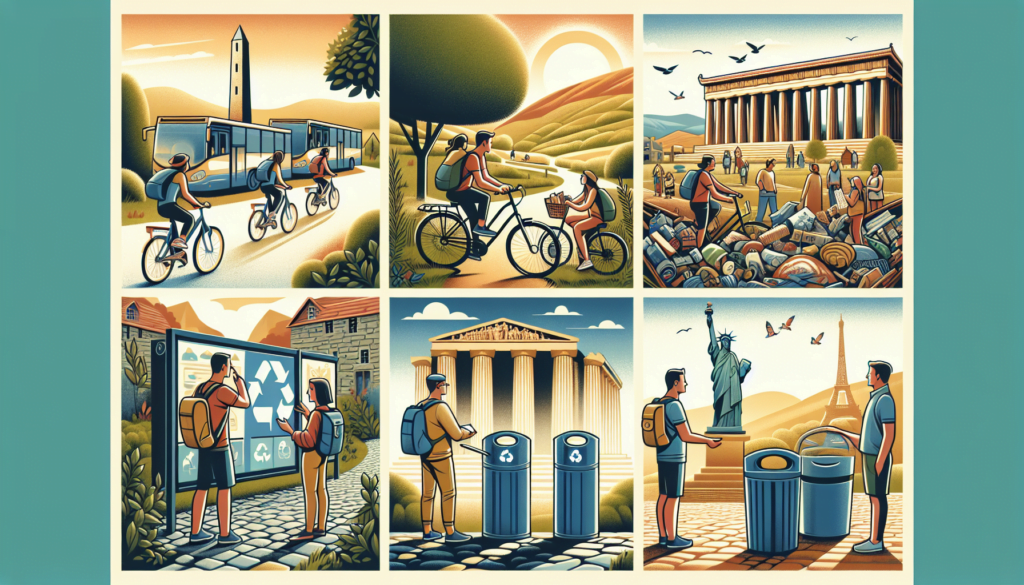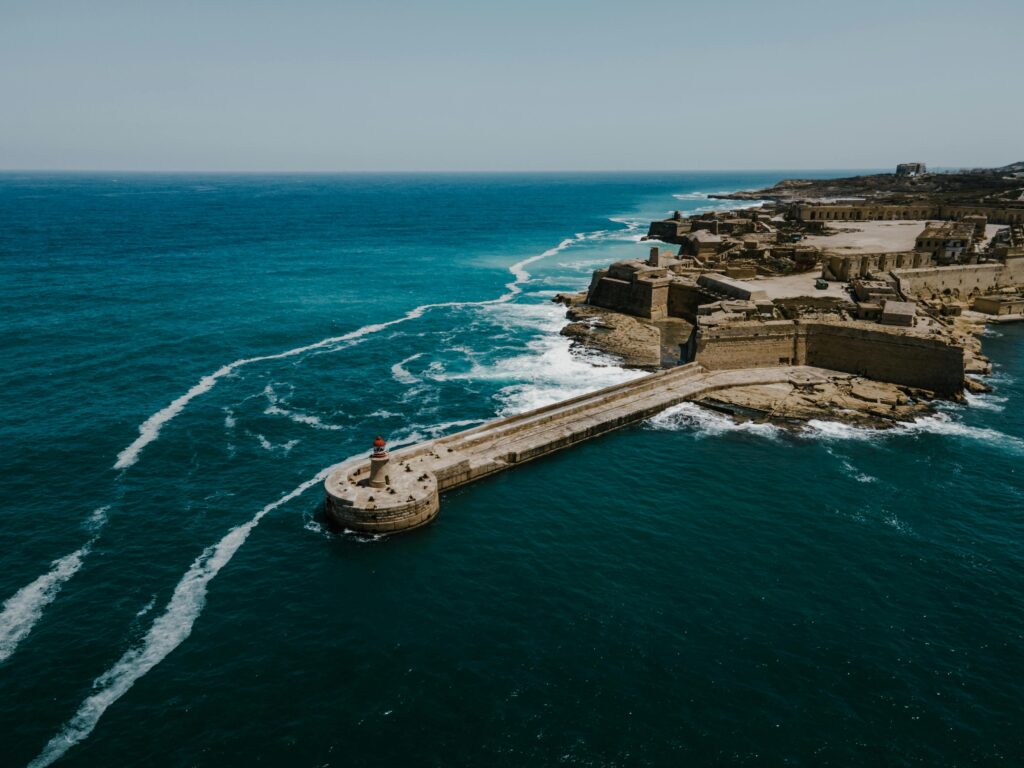The article examines strategies for individuals to minimize their environmental footprint when visiting popular tourist sites. It explores various approaches on how to reduce the Travel Impact, emphasizing the importance of responsible tourism and sustainable practices. By providing practical tips and insights, the article empowers readers to make informed choices and contribute to the preservation of these iconic destinations for future generations.
Table of Contents
How Can I Reduce My Travel Impact On Popular Tourist Sites?
1. Choose sustainable transportation options
When it comes to reducing the environmental impact of travel, choosing sustainable transportation options is crucial. One of the most effective ways to do this is by utilizing public transportation. Instead of renting a car or taking a taxi, opt for buses, trains, or subways. Not only does this help reduce carbon emissions, but it also allows you to experience the local culture and connect with fellow travelers.
Another sustainable transportation option is to take a bike or walk whenever possible. Many cities now offer bike-sharing programs, making it convenient to explore on two wheels. Walking is not only environmentally friendly but also allows you to immerse yourself in the surroundings and discover hidden gems that may go unnoticed when using other modes of transportation.
When planning tours or excursions, seek out eco-friendly options. Look for transportation services that prioritize sustainability and minimize their impact on the environment. These could include electric or hybrid vehicles, or even companies that use biofuels. By choosing such services, you can enjoy your travel experience while knowing that you are making a positive impact.
2. Plan your trip during off-peak seasons
One effective way to reduce the impact on popular tourist sites and destinations is to plan your trip during off-peak seasons. By avoiding the peak travel periods, you can help alleviate overcrowding and contribute to a more enjoyable and sustainable travel experience.
During the off-peak seasons, tourist sites are typically less crowded, allowing you to fully appreciate their beauty and significance without feeling rushed or overwhelmed. Moreover, by visiting during quieter times, you can support local businesses that heavily rely on tourism during these periods. Your presence during off-peak seasons helps sustain their livelihoods and positively impacts the local economy.
By experiencing destinations with fewer crowds, you also have the opportunity to interact with locals and immerse yourself in the local culture. Instead of competing with tourists for attention, you can engage in more meaningful conversations and gain a deeper understanding of the place you are visiting.

3. Respect local culture and traditions
When traveling to different countries and regions, it is essential to respect and appreciate the local culture and traditions. Learning about the customs, cultural norms, and etiquette of a destination prior to your visit is a necessary step in being a responsible traveler.
By doing your research, you can ensure that you dress appropriately and modestly, taking into consideration the cultural norms of the place you are visiting. This not only shows respect for the local culture but also helps you avoid any potentially uncomfortable or disrespectful situations.
In addition, it is important to follow local customs and traditions. This may involve adopting certain behaviors or refraining from others, such as taking off your shoes before entering homes or places of worship. By being aware of and respecting these practices, you demonstrate your appreciation for the local culture and contribute to a more harmonious travel experience.
4. Reduce waste and littering
To minimize your environmental impact while traveling, it is crucial to reduce waste and avoid littering. A few simple steps can make a significant difference.
Carrying a reusable water bottle is one of the most effective ways to reduce plastic waste. Instead of buying single-use plastic bottles, refill your bottle whenever possible. Many destinations now have water filtration stations or encourage the use of tap water, making it easier to stay hydrated sustainably.
Additionally, avoid using single-use plastics such as straws, plastic bags, or disposable cutlery. Instead, bring your own reusable alternatives or opt for environmentally friendly options provided by businesses or accommodations. By refusing single-use plastics, you help reduce waste and protect the environment.
Proper waste disposal is equally important. Always dispose of your waste responsibly, following the designated recycling and trash bins provided. If proper disposal options are not available, it is best to hold onto your waste until you find an appropriate place to dispose of it. This prevents littering and maintains the beauty of the destination for future travelers.

5. Conserve water and energy
Conserving water and energy is crucial to reducing the environmental impact of travel. By implementing simple practices, you can contribute to the preservation of natural resources.
Taking shorter showers is an effective way to conserve water. When staying in accommodations, be mindful of the amount of time you spend in the shower to minimize water consumption. Similarly, turning off lights and air conditioning when not in use helps conserve energy. By being conscientious of your energy usage, you can reduce your carbon footprint and contribute to mitigating climate change.
Choosing eco-friendly accommodation options is another way to conserve water and energy. Look for accommodations that prioritize sustainability and have implemented measures such as energy-efficient lighting, water-saving fixtures, and recycling programs. By supporting these establishments, you encourage the adoption of sustainable practices in the tourism industry.
6. Support local communities and economies
One of the most impactful ways to ensure your travel has a positive influence is by supporting local communities and economies. There are various ways you can do this while exploring a destination.
Shopping at local markets and stores not only allows you to experience the authentic products and crafts of the region but also supports local artisans and producers. By purchasing locally made goods, you contribute to the livelihoods of individuals within the community, helping to sustain their businesses and promoting cultural heritage.
Similarly, dining at local restaurants and cafes provides a valuable opportunity to taste traditional cuisine and support the local culinary scene. Patronizing these establishments helps them flourish and maintain their cultural identity, rather than being overshadowed by international chains.
Staying in locally owned accommodations is another way to support the local economy. By choosing small, locally operated hotels or guesthouses, you contribute directly to the community and enable them to reinvest in local initiatives and infrastructure.

7. Minimize your carbon footprint
Reducing your carbon footprint is essential in mitigating the impact of travel on the environment. There are several measures you can take to achieve this goal.
Offsetting your travel emissions is a way to counterbalance the carbon footprint generated by your journey. Many organizations offer carbon offset programs that invest in renewable energy projects or forestry initiatives. By participating in these programs, you can help fund projects that reduce greenhouse gas emissions and contribute to a more sustainable future.
Choosing direct flights whenever possible is another way to minimize your carbon footprint. Non-stop flights generally produce fewer emissions compared to flights with layovers. By selecting the most direct route, you reduce the overall distance traveled and, consequently, the emissions associated with your journey.
Opting for fuel-efficient transportation, such as hybrid or electric vehicles, is also beneficial in reducing your carbon footprint. If renting a car is necessary, consider choosing a vehicle with low fuel consumption and low emissions. Alternatively, utilize public transportation systems or choose walking and biking options whenever feasible.
8. Engage in responsible wildlife tourism
When it comes to engaging with wildlife during your travels, it is crucial to be responsible and avoid supporting venues that exploit animals. Many attractions and activities involving animals may contribute to their mistreatment and captivity.
Instead, prioritize ethical wildlife tourism. Research and select tour operators that have a commitment to animal welfare and adhere to responsible practices. These operators prioritize observation and conservation, allowing you to experience wildlife in their natural habitat with minimal disturbance.
Respect wildlife and keep a safe distance from animals. It may be tempting to get close for the perfect photo, but it is important to remember that animals should be observed from a distance that ensures their well-being and prevents any harm to them or their habitat.
When in doubt, ask tour operators about their ethical practices and policies regarding wildlife encounters. By voicing your concerns and supporting responsible wildlife tourism, you contribute to the conservation of wildlife and help combat the exploitation of animals for entertainment purposes.

9. Leave no trace behind
Preserving the natural and cultural heritage of destinations requires leaving no trace behind. This means refraining from removing natural or cultural artifacts, staying on designated paths and trails, and disposing of waste properly.
It is essential to respect and protect the natural environment by refraining from removing any souvenirs or natural materials. This ensures the sustainability of ecosystems and allows future visitors to appreciate the beauty of the area.
Stick to designated paths and trails when exploring natural areas. Venturing off these paths can disrupt fragile ecosystems, damage flora, and disturb wildlife habitats. By staying on designated paths, you help preserve the integrity of the environment and minimize your impact.
Dispose of waste properly to prevent pollution and maintain the cleanliness of the destination. Carry a small reusable bag with you to collect any trash you generate during your visit. If there are no appropriate waste disposal facilities available, carry your waste with you until you reach a place where it can be properly disposed of. By taking these simple actions, you can ensure the preservation and respect of the destination.
10. Educate yourself and others
Finally, educating yourself and others about sustainable travel practices is key to promoting responsible and ethical tourism. By learning about the local environment and ecosystems, you gain a deeper understanding of the challenges they face and how your actions can make a positive impact.
Share your knowledge and experiences with others, encouraging them to adopt sustainable travel practices as well. By fostering a collective consciousness and raising awareness, you contribute to a wider movement towards sustainable tourism.
Supporting conservation projects and organizations is another way to actively promote sustainability. Consider donating to or volunteering with organizations that work towards protecting natural areas, conserving wildlife, and educating local communities about sustainable practices.
In conclusion, reducing your travel impact on popular tourist sites requires a holistic approach encompassing sustainable transportation options, planning during off-peak seasons, respecting local culture and traditions, reducing waste and littering, conserving water and energy, supporting local communities, minimizing your carbon footprint, engaging in responsible wildlife tourism, leaving no trace behind, and continuously educating yourself and others. By implementing these practices, you can enjoy meaningful and sustainable travel experiences while preserving the destinations for future generations.

Related site – 9 Ways To Reduce Your Environmental Impact While Traveling
St Petersburg, Florida: A Haven for Art and Nature Enthusiasts
